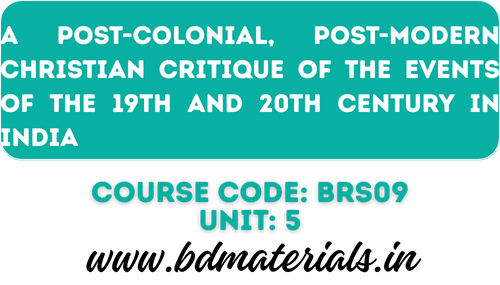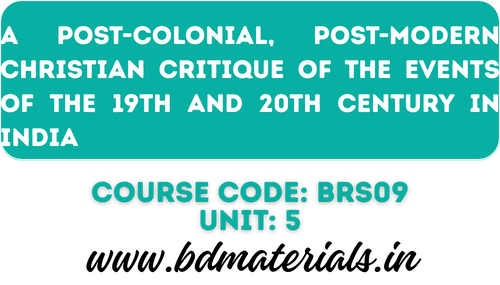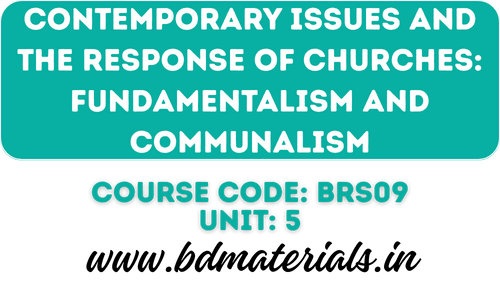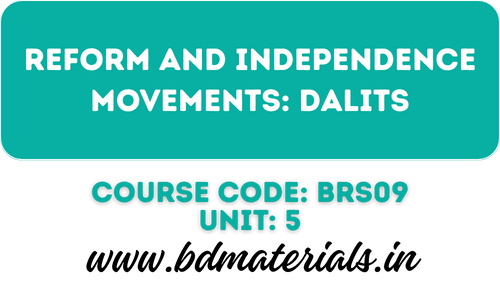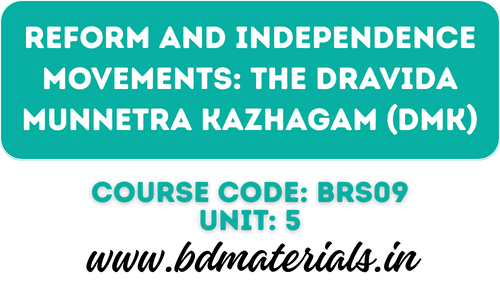Guru Movements: Mata Amritananda Mayi
Mata Amritananda Mayi (Mother of the Immortal Nectar) is one of India‘s much revered Gurus, not only by the people of her homeland, Kerela, but also by millions, both within and outside the country. Affectionately known as ‗Amma‘ this spiritual luminary, renowned for her service to humanity, love of God, and concern for others, is the epitome of noble traits. Her mission is based on a harmonious blend of modern science, technology and ancient wisdom. Mata Amritananda Mayi Mission at Amritapuri is the residence and headquarters of the living legend who attracts disciples from all over the world.
Early life:
On Sept 27, 1953 a girl child was born at a fisherman‘s house in the Idamannel family at Villivakku of Prayakadavu village in Quilon, Kerela and she was named Sudhamani (Ambrosial Jewel). She was the 4th of the 13 children born to Sugunanandan and Damayanthi.. The circumstances surrounding Sudhamani‘s birth are intriguing. Her mother felt no labour pains, and heard no cries of a newborn. The baby was born with dark blue, almost black skin. She was born smiling and lay in padmasana, which is the lotus posture of hatha yoga, with her fingers in chinmudra i.e., the tip of the thumb and forefinger touching to form a circle. Her parents thought something was wrong with her because of her skin and went to doctors to try to cure it but to no avail. Unfortunately, the infant‘s complexion was a matter of great displeasure to her mother who, along with other members of the family, looked upon the child with great disdain.
From the moment the girl was born, the family began noticing unusual signs. At six months, she started to walk, and not long after that, was seen running. At age 2, she began reciting prayers in praise of Lord Krishna, by 5 she lost herself in her prayers, and by 7 she would sing and dance ecstatically in praise of Krishna. She grew up to be an obedient child, well loved by everyone. Due to her virtuous qualities, everyone in the village called her Kunju (The Little One).
However, because of her dark colour, she was the subject of potential social stigma, not to mention a possible difficulty in finding a suitable husband. She was often abused and beaten – a situation which represented a society and world at large where people fretted over dowry and marriage of the sometimes unwanted female babies. Sudhamani was exceptionally brilliant in her studies. However, at the age of nine, while she was in the fourth grade, her chronically ailing mother, who was suffering from rheumatism entrusted her with many of the household duties.
She patiently endured the hard work after her mother‘s health deteriorated due to repeated pregnancies. Somehow she managed to pass the fourth grade. Thereafter, she was fully involved in domestic chores and did household work till 11 P.M. When everybody was fast asleep, she would sit in the small room which the family used as a temple, pouring out her heart to Krishna through devotional singing.
She ultimately had to give up her education after passing the 4th standard. At home her mother became even more hot-tempered and cruel due to her ill-health, which was aggravated by the work she had to do at home during Sudhamani‘s absence when she was sent to her grandmother‘s and uncle‘s home to work. But Sudhamani had no complaints with the callous upbringing she was given. She said that from her mother, she learned perfectionism. She would get beaten up even if there was a little rubbish left over in the courtyard after sweeping of if a slight trace of dirt was found after the vessels were washed. Her elder brother was a terror, and Sudhamani became the frequent victim of his hot temper.
Besides her exceptional brilliance, endearing and cheerful nature, exemplary devotion and soulstirring songs, Sudhamani was known for her uncompromising compassion for the poor and the needy. At a very young age she was acutely aware of the poverty and suffering in her village. She was disturbed by the plight of the poor and sometimes she would steal food and bangles from her family to give away to the poor and suffering. At other times she would keep on pestering her father for money to be given to the needy.
Sudhamani‘s spiritual quest included long hours of meditating and devotional singing after she finished with her daily routine works. Often her father or her brother would reprimand her when she danced, sang and cried out for Krishna while others tried to sleep. Her parents were in despair as to what to do with her whom they began to suspect was mentally ill. Later, when Sudhamani was feeling unbearable grief because she hadn‘t seen god, she turned against the whole world. She felt angry at nature and at times she would spit into her food. Sudhamani became like a small child calling out, ―I want to see my mother!‖ Her craving for the Divine Mother became extreme and her prayers incessant. She pleaded to the Mother to put an end to her life is She was unwilling to come to her.
Enlightenment:
A significant incident occurred in Sept 1975 that lifted a veil from her divinity. One day, as Sudhamani was walking home, holding aloft a bundle of grass, she overheard the final verses of the Srimad Bhagavatam from a neighbouring house. It is said that Sudhamani‘s inner identification with Lord Krishna transformed even her features to the amazement of the devotees gathered there.
Sudhamani felt a strong aversion for the material world. She would sit for long hours immersed in meditation on the Divine Mother by the seaside in the silent hours of the night. Urged by an inner voice, she had to leave the house and thenceforth lived outdoors. Raising her hands above the head with tears rolling down her cheeks like a small child appealing to its mother, Sudhamani would cry out, ‗Amma, Amma…have you left me here to die with longing for your vision?‖ One day, Sudhamani heard an inner voice say: ―My child, I dwell in the heart of all beings and have no fixed abode…‖ It was after this inner call that she started manifesting Devi Bhava, the mood of the Divine Mother, in addition to the Krishna Bhava. During her Devi Sadhana, she was generally aloof and uncommunicative. All her time was devoted to prayer and meditation. She became more daring and even her facial expression changed. Her disciples renamed her Amritanandamayi, since she was called Sudhamani and ‗sudha’ means ‗amritam’ or nectar.
She became more and more involved with her spiritual pursuits, mingling with her devotees and imparting them spiritual instructions. This marked the beginning of her spiritual mission. She was henceforth addressed as Amma, and she gave darshan to the devotees as Devi. By the end of 1978, a group of well-educated young people, renouncing every worldly thing took refuge with Amma in an attempt to serve humanity. They included an Australian woman Gayatri, and another one, a native of Reunion Island. Amma‘s father now agreed to donate a small piece of land for her cause. This marked the informal beginning of the ashrama. Initially, Amma was not in favour of the idea of a formal ashrama. However, as the flow of disciples and devotees increased, it became a necessity. Thus, on 6 May 1981, with a view to preserve and propagate the ideals and teachings of Amma, the Mata Amritanandamayi Mission was founded and registered.
Teachings:
Amma expresses profound truth in a simple, motherly way. She teaches through experience. Though speaking only Malayalam, her native tongue, the multi-racial and multireligious composition of her followers is a proof of her extraordinary calibre.
a) God:
Amma teaches that God is simple. He places no conditions, and has no limits. He gives unconditionally. He is love and that love is constant, uninterrupted and an unbreakable flow. She also says that sorrow is the real guru that will take us closer to God. Love alone lends attraction and beauty to actions. To know God is to love Him.
The knowledge that teaches us to how to live and how to lead a satisfied life in the face of obstacles, is the spiritual knowledge, the mind‘s knowledge. Only by striving for self-realization can we enjoy everlasting bliss. Amma calls for sraddha or awareness and attention for the work at hand which is an admirable quality of a spiritual aspirant. If we take refuge in God, He will meet both our spiritual and material needs. Devotion to God will bring prosperity to us, to our families and to the society.
b) Guruhood:
Amma is considered to be the Satguru or Supreme Guru who speaks directly from the state of Oneness. She has initiated many educated youths, both male and female into sannyas or monkhood and defined their monkhood as a life of service to others. Although receiving no formal guidance or initiation into the spiritual life by a guru, she explains the intricate philosophies of the scriptures without having studied them. By defining sannyas as a life of selfless service, she has brought alive the ideals of the ancient Vedic tradition. Though she had no formal education beyond 4th standard, she communicates the truth transcending the barrier of language.
c) Motherhood and dowry system:
She maintains celibacy but she has become known as the mother for many. People pour out their woes to her and get consoled. She shares her boundless love with all, young or old, sick and the poor, everyone who comes to her receives the same unconditional love. At the root of all the social services undertaken lies her teaching that the Divine exists in every person, plant and animal. Perceiving this unity is the essence of spirituality and the means by which to end all sufferings.
Decrying the widespread practice of dowry system, her movement has made a resolve not to give or take dowry. They also wanted the outdated Indian penal system to be changed to suit the social needs of today. They speak on empowering women through universal motherhood, extol the virtues of motherhood, which according to them is the noblest of ideals. ―Motherhood is not a weakness, it needs to be awakened.‖
d) Temple:
The inner shrine of Amma‘s temple, the ‗Brahmasthanam‘ (the abode of the Absolute Brahman) has a single block of stone with the images of four deities on its four sides, symbolizing the essential unity in the diverse forms worshipped as God in the Indian tradition. Women priests consecrated by Amma are allowed to serve in the temples. She has devised a special kind of communal worship where the devotee, rather than the priest, is able to make offerings to God personally.
e) Chanting (Japa):
Japa is the vocal and mental repetition of the divine name or sound or mantra. Amma says that the purpose of japa is to lead us to the ultimate silence of the Self, from where all sounds and forms arise. Further, in the present age of materialism, chanting the mantra or japa, is the easiest way for us to obtain inner purification and concentration. Japa can be done at anytime, anywhere without observing any rule regarding the purity of mind and body. It can be done while engaged in any task. Since modern day diseases are mostly psychosomatic, Japa will bestow good health to both mind and body.
Constantly repeating God‘s name will diminish the ego. Love will spring through japa if one has complete faith and intent to reach the goal and done with the proper understanding of this principle, it will ultimately take us to the Source. At this point, the seeker realizes that the form he has been meditating on, as well as all the other forms that exist within himself, are the manifestations of the Self.
f) Meditation:
It is not simply sitting with eyes closed. It is a state of unbroken concentration like an endless stream. Amma says that we should give up the idea about becoming more spiritual as that very thought can sometimes be a hindrance. First, we must prepare the area where we will meditate. As the mind becomes more clearer in meditation, we also become more relaxed and filled with inner peace.
g) Kundalini Shakti:
Amma teaches that there is a Ganges or holy river within us, which has the power to purify our mind.
Social Services:
Amriteswari Society organizes social services wherever it is needed and possible. Pelangi Home established in 1984 is a welfare home for destitutes. Sembawang Halfway centre is a place of rehabilitation of drug addicts. At Amritapuri Ashram, a Vedanta Vidyalayam or school has been established. Since 1987, Amma has been constructing houses every year for the benefit of the poor who live around the Ashram. In 1996 she inaugurated a huge project called Amritakuteeram with a goal to construct 1 lakh houses in different parts of India. Amrita Niketanam is set up to care for orphans and Anbu Illam for the aged.
The Mata Amritanandamayi Math has 300 small centres in all districts of Kerela, over a 100 in other states, and over 25 large centres around the world. Though the Math concentrates on welfare projects in India, it has initiated several abroad, like playschools for children, and centres which distribute free food and clothing to the poor. Already 30,000 homes have been constructed in Maharashtra and Rajasthan for the poor. The Math feeds about 50,000 poor people each month, and regularly provides clothing for the needy. Tribal schools have been set up in Kerela‘s Idukki and Wayanad district, and there are reputed medical, engineering colleges, schools and hospitals in Amma‘s name.
The 800-bed Amritanandamayi Institute of Medical Sciences (AIMS) has state-of-the-art facilities, catering to both the rich and the poor. Her ashram at Amritapuri houses 3,000 devotees at a time, but it is still not big enough to host all her devotees from around the world. There is even a special train Amrita Express, for her devotees. Future projects include an AIDS hospice, mass marriages for the poor, rehabilitating prostitutes in Kolkata and setting up of a free legal cell with 1008 lawyers serving the needy.
In 1993, Amritanandamayi was one of the 3 people who represented Hinduism at the Parliament of the World‘s Religions in Chicago. In 2002, she won the Gandhi-King Award for NonViolence; earlier recipients included Nelson Mandela and former UN Secretary-General Kofi Annan. Her ashram figures at the top of the list of charities receiving donations from abroad. In 1998-99, for instance the ashram is said to have received more than 50 crores.
Amritanandamayi‘s spiritual power is a simple, warm hug. She usually follows her hug with a kiss on the forehead or cheek, a gentle stroking of the hands/back/cheek chin and some reassuring words. Sometimes she gifts people a candy or an apple. As she retires to her room, some of her devotees would crouch and kiss the spot where she sat, to capture some of her grace. Amma‘s darshan certainly has an effect on her devotees. Some cry, some laugh, others just go and meditate after that, some say they feel highly energetic while some others are just happy getting hugged. Others find in her a love that seems all-encompassing. To some she;s miraculous, they narrate how their loved ones with disease considered incurable, were miraculously cured when they were taken to Amma. To others, she is a mystery. No one has counted, but a popular estimate is that she would have hugged more than 2 crore people. Sometimes there have been time when she has hugged over 20,000 people at a stretch in 20hours sessions.
Evaluation:
Amritanandamayi had to face the wrath of rationalists in the beginning, although criticisms have become less now, there are still some who find fault with her. Certain intellectuals have also pointed fingers. Sreeni Pattathanam, head of the Indian Rationalist Association in 1985 published a book in Malayalam entitled ―Sacred Stories and Realities of Mata Amritanandamayi,‖ in which he claimed that the ―miracles‖ of Amma had been falsified. He also alleged that there had been many suspicious deaths in and around her ashram that required police investigation. In 2013, Gail Tredwell, a former disciple, self-published a memoir of her 1980-99 tenure in Amma‘s ashram. She made certain allegations which included the claim that Tredwell was physically assaulted by Amma, but these have not been substantiated. Criticisms have also been levelled regarding the source of foreign aid received by Amma and demanding investigation of its utilisation.
Furthermore, whether in politics or religion, personality cult is not a healthy practice. It becomes a lower cultural indicator of the followers and affects their critical intelligence as well. Besides, it spirituality is a connection between human being and Divine, there is absolutely no need to have an intermediary. The sadguru tradition in Hindu culture also draws the line somewhere and gurus like Ramana Maharishi never allowed people to worship him.
However, it is in fact, a splendid contribution of Amma to help women get rid of inferiority complex and undervaluation. She is indeed a great inspiration to many. Her selfless social service is a replica of her beautiful inner consciousness and her effort for the poor and the downtrodden, the marginalised and the excluded deserve praise. Her efforts in raising over 100 crores of rupees for the Tsunami affected people in South India is also worthy of all appreciation.
Friendly Note
Bachelor of Divinity Materials is your go-to resource for comprehensive Biblical studies, supporting students in Bachelor of Divinity (B.D.) and other theological courses. Our platform offers access to the full syllabus, detailed answers, and a vast collection of assignments, study guides, articles, and research papers to help you excel academically.
We provide downloadable PDFs of study materials, including books and journals, for convenient learning anytime, anywhere. Whether preparing for exams or conducting research, our resources cater to both students and scholars in biblical studies.
Committed to empowering theological learners, we aim to deliver high-quality, authentic study materials. Explore Bachelor of Divinity Materials to deepen your understanding of God’s Word and Christian doctrine, making it a valuable resource for aspiring ministers and anyone dedicated to theology.

